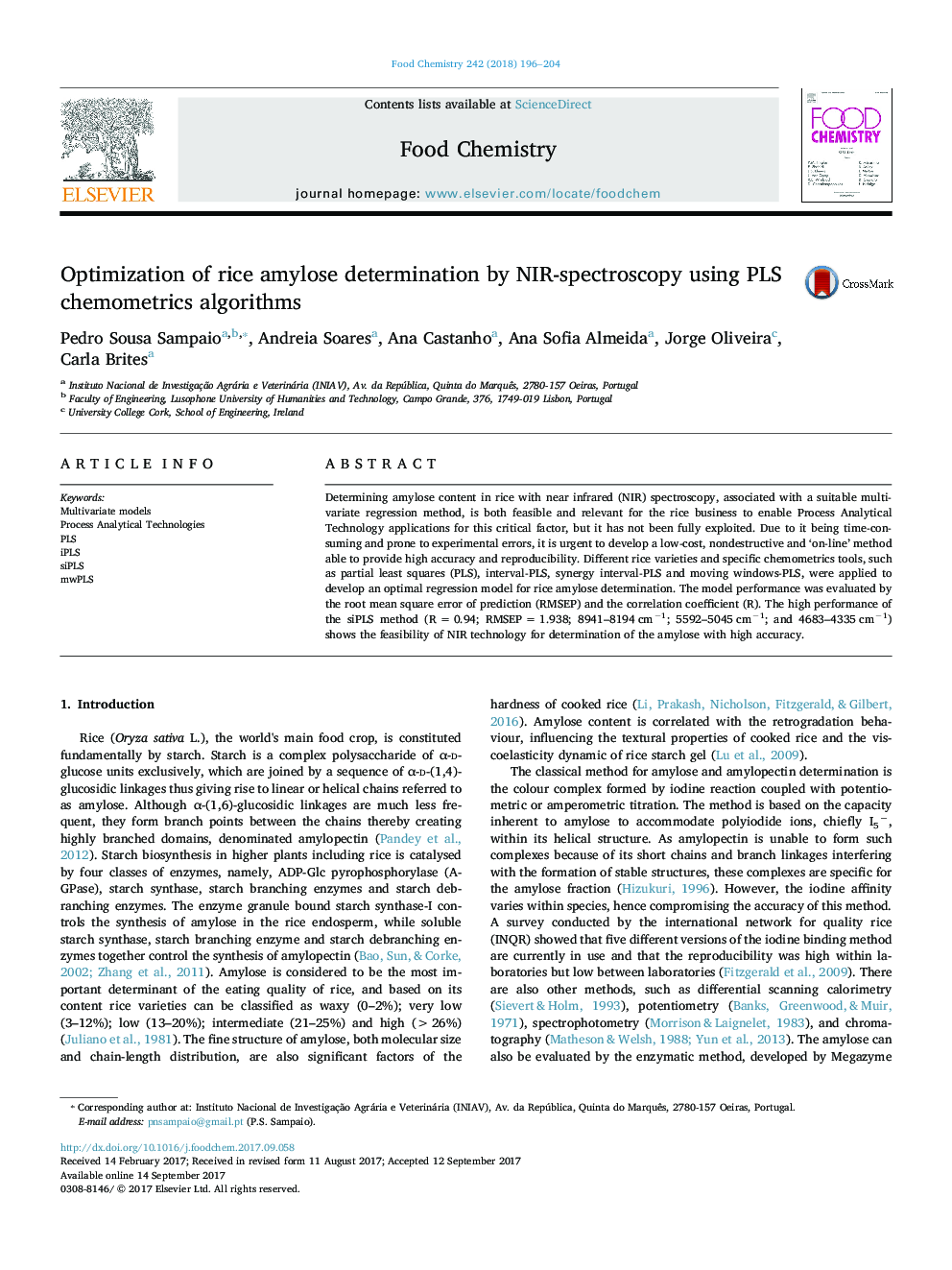| Article ID | Journal | Published Year | Pages | File Type |
|---|---|---|---|---|
| 5132599 | Food Chemistry | 2018 | 9 Pages |
â¢Optimization of model for rice amylose determination using NIR spectroscopy.â¢PLS, iPLS, siPLS and mwPLS algorithms showed high accuracy for amylose prediction.â¢siPLS allowed to obtained a model with highest accuracy and low error.â¢NIR and chemometric can be suitable techniques for fast, 'on-line' and accurate amylose determination.
Determining amylose content in rice with near infrared (NIR) spectroscopy, associated with a suitable multivariate regression method, is both feasible and relevant for the rice business to enable Process Analytical Technology applications for this critical factor, but it has not been fully exploited. Due to it being time-consuming and prone to experimental errors, it is urgent to develop a low-cost, nondestructive and 'on-line' method able to provide high accuracy and reproducibility. Different rice varieties and specific chemometrics tools, such as partial least squares (PLS), interval-PLS, synergy interval-PLS and moving windows-PLS, were applied to develop an optimal regression model for rice amylose determination. The model performance was evaluated by the root mean square error of prediction (RMSEP) and the correlation coefficient (R). The high performance of the siPLS method (RÂ =Â 0.94; RMSEPÂ =Â 1.938; 8941-8194Â cmâ1; 5592-5045Â cmâ1; and 4683-4335Â cmâ1) shows the feasibility of NIR technology for determination of the amylose with high accuracy.
